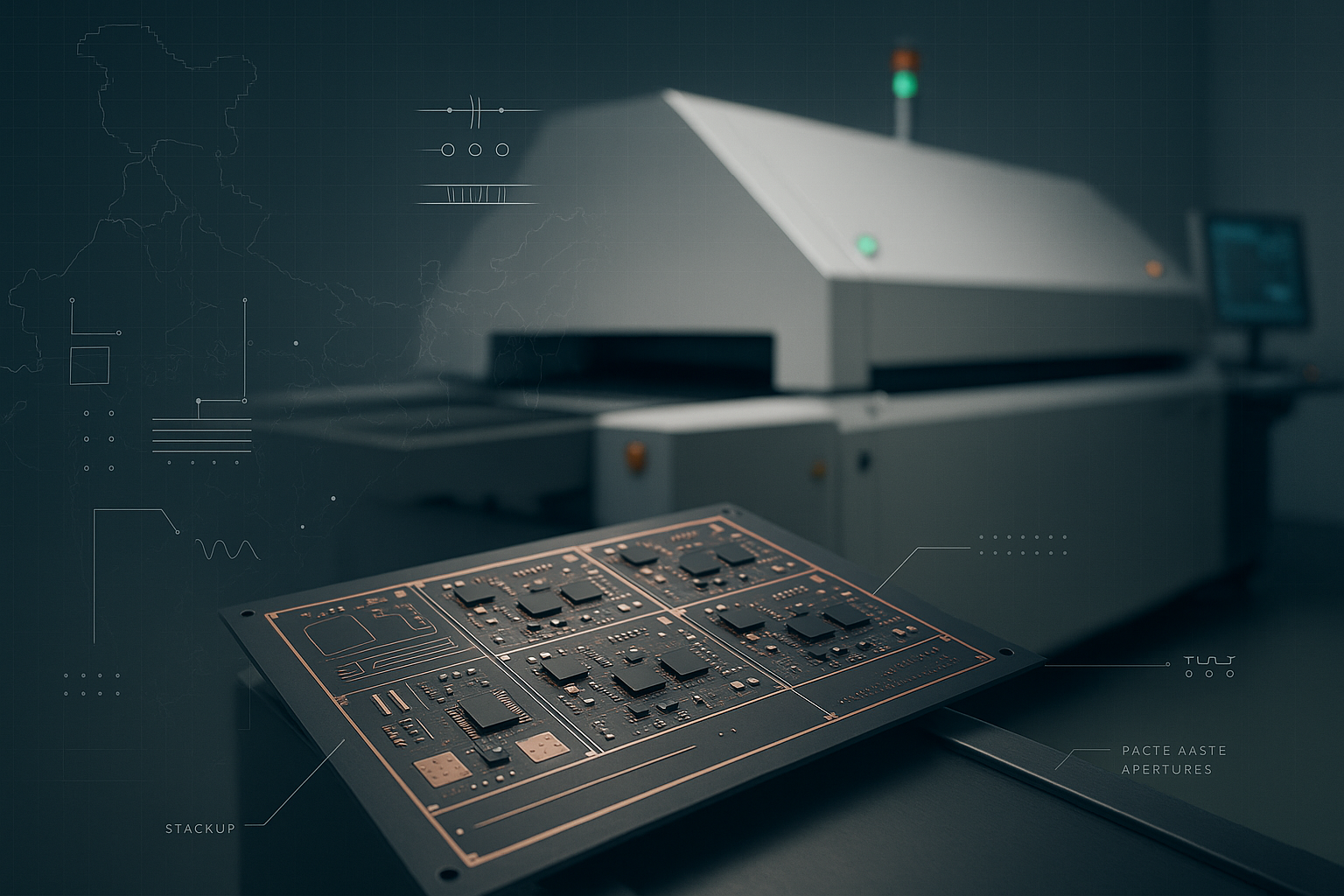Electronics manufacturing is a complex and constantly evolving field, with a wide range of terminology and concepts that can be difficult to understand for those new to the industry. In this article, we will provide a comprehensive overview of some of the key terms and concepts that are commonly used in electronics manufacturing, along with explanations of their meanings and applications.
Key Terminologies Used in Electronics Manufacturing:
- Surface mount technology (SMT)
- Through-hole technology
- Printed circuit board (PCB)
- Soldering
- Reflow soldering
- Wave soldering
- Pick and place
- Surface inspection
- Cleanliness
Surface mount technology (SMT)
Surface mount technology (SMT) is a method of manufacturing electronic components and assemblies by placing components onto the surface of a printed circuit board (PCB) rather than through holes. SMT allows for smaller, more densely-packed components and is commonly used in the manufacturing of smartphones, laptops, and other consumer electronics.
Through-hole technology
Through-hole technology, also known as through-hole mounting, is the opposite of SMT and involves mounting components onto a PCB by inserting leads through holes in the board and soldering them in place. This method is typically used for larger, heavier components and allows for more robust connections, but is less commonly used due to the increased size and cost of the components.
Printed circuit board (PCB)
A printed circuit board (PCB) is a flat, insulating board made of fiberglass, plastic, or other materials that contains a pattern of conductive tracks or traces. PCBs are used as the basis for electronic circuits and are essential components in the manufacturing of nearly all electronic devices.
Soldering
Soldering is a process used to join two or more metal components together by melting and flowing a filler metal (solder) into the joint. In electronics manufacturing, soldering is commonly used to attach components to PCBs and to create connections between different parts of an electronic circuit.
Reflow soldering
Reflow soldering is a process used in SMT manufacturing in which a PCB is passed through a series of heating and cooling zones in order to melt and flow the solder onto the components. This process is highly automated and allows for precise control over the soldering process, resulting in consistent and reliable connections.
Wave soldering
Wave soldering is a process used in through-hole manufacturing in which a PCB is passed over a wave of molten solder. This process allows for the simultaneous soldering of multiple components, but is less precise and can result in poor connections or damaged components if not properly controlled.
Pick and place
Pick and place is a process used in SMT manufacturing in which components are picked up from a supply reel or tray and placed onto a PCB by a machine called a pick and place robot. This process is highly automated and allows for precise control over component placement, ensuring that components are placed accurately and consistently on the PCB.
Surface inspection
Surface inspection is a process used to ensure that components are properly placed and soldered on a PCB. This is typically done using automated optical inspection (AOI) machines, which use cameras and image processing algorithms to identify any defects or issues with the components and their connections.
Cleanliness
Cleanliness is a critical factor in electronics manufacturing, as even small amounts of dust or other contaminants can cause defects or failures in electronic components and assemblies. To maintain cleanliness, manufacturers use a variety of techniques, such as air filtration, dust-free manufacturing environments, and cleaning agents.
In conclusion, the terminology and concepts used in electronics manufacturing are essential for understanding and working in the industry. Understanding these terms and concepts allows individuals to effectively communicate and collaborate with colleagues, as well as understand and evaluate the manufacturing processes used in the industry.
In addition, knowing these terms and concepts is crucial for identifying potential issues and defects in electronic components and assemblies, as well as for developing solutions and improvements to the manufacturing processes.
Overall, a thorough understanding of the terminology and concepts used in electronics manufacturing is essential for anyone working in the field and for ensuring the success and quality of electronic devices.
%20(1).png)


